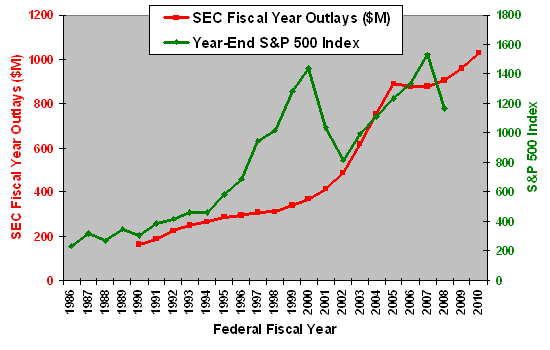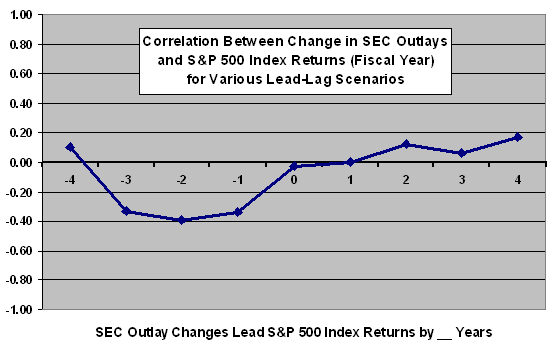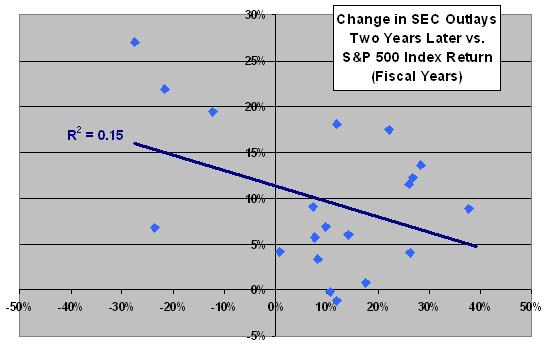How does the U.S. Securities and Exchange Commission’s (SEC) level of spending relate to U.S. stock market returns? Are expenditures reactive, growing after bear markets? Does higher spending boost investor confidence and subsequent stock returns? To investigate, we relate SEC outlays and the S&P 500 Index by federal fiscal year (October through September). Using agency outlay data for fiscal years 1990 through 2010 (estimates for the final two years) and S&P 500 closes for fiscal years 1986 through 2008, we find that:
The following chart plots for comparison SEC outlays and the S&P 500 Index for federal fiscal years since 1990 for SEC outlays and since 1986 for the stock index. SEC outlays for fiscal years 2009 and 2010 are estimates. Visual inspection offers a hint that SEC spending tends to ramp up after bear markets and moderate after bull markets.
For a closer look, we relate annual changes in SEC outlays and S&P 500 Index annual returns for various lead-lag scenarios.

The next chart plots Pearson correlations between the change in SEC outlays and the return on the S&P 500 Index by fiscal year based on the above data for lead-lag relationships ranging from SEC outlays lag stock returns by four years to SEC outlays lead stock returns by four years. Results suggest a negative correlation between stock returns and spending changes one to three years later. In other words, when the stock market declines (advances), SEC spending tends to rise (decline or flatten) over the following one to three years. There is no convincing relationship between SEC spending changes and same-year or future-year stock returns.
How convincing is the two-year lag scenario?

The following scatter plot depicts the relationship between S&P 500 Index returns and SEC spending changes two years later based on the above data. The plot is somewhat well-organized but the sample is small. The R-squared statistic for the relationship is 0.15, indicating that the stock market return for a given year explains 15% of the change in SEC fiscal year spending two years hence.

In summary, very limited evidence suggests that regulatory activity reacts to stock market returns with a lag of one to three years and has little or no effect on future stock market returns.